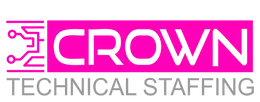In manufacturing sectors, losing a key technical leader or operations manager isn’t just a headache. It’s a risk to the whole line, your delivery schedule, and your bottom line. In many facilities, the retirement of experienced supervisors, plant managers, and directors — often all within a short time frame — poses a strategic threat. I recently spoke with an HR leader who had 16 managers and directors at the age of 65+, and they feared that their inevitable retirement (hopefully not all at once) would leave a considerable knowledge and productivity gap in the organization. This context heavily influences why succession planning is now a board-level concern in manufacturing, compared to being merely an HR formality in the past.
What’s Changing?
- Technology’s rewriting the game: Robotics, AI, IoT—future plant leaders need to blend old-school know-how with cutting-edge digital skills. Don’t just groom the best machine operator for management, look for folks who can adapt, learn, and see around corners.
- Diversity is more than a buzzword: The best manufacturers are building pipelines that don’t all look the same. Broader perspectives mean faster problem-solving and more resilient teams. Don’t let leadership development be a closed shop.
- The ‘silver tsunami’ isn’t theory: With retirements ramping up, knowledge transfer must be a daily discipline, not a last-minute scramble.
Some of your best leadership talent is already clocking in every day. The folks who’ve worked their way up know your systems, your culture, and exactly what keeps things running safely and smoothly. When you give these homegrown pros real opportunities to step up, they earn respect fast and set the bar for the whole team.
Developing leaders from within isn’t just a cool box to check off. It locks in years of knowledge, keeps your operations steady when change hits, and shows everyone there’s a future here worth sticking around for. If you want loyalty and smoother transitions, invest in the people who already know how to get the job done.
The bottom line? If your leadership strategy starts at mid-management, you’re already too late!
Unique Succession Challenges for Manufacturers:
- Technical Knowledge Loss: Legacy systems, institutional know-how, and “tribal knowledge” in operations often aren’t documented or easily replaced.
- Rural Footprints: Many manufacturing facilities are located in regions with tight labor markets, making external hiring especially difficult for highly specialized or supervisory positions.
- Changing Skills Needs: The rise of automation, digital transformation, and artificial intelligence requires leaders who can bridge legacy expertise with new technologies.
- Cultural Resistance: Manufacturing has a strong tradition of tenure-based promotions, but this doesn’t always identify or develop those best suited for leading in modern, tech-enabled environments.
Steps to Building an Effective Manufacturing Leadership Pipeline
1. Identify and Cultivate Front-Line Talent Early. Don’t wait for vacancies to appear. Go beyond performance reviews—lean on supervisor insights, peer feedback, and signs of cultural fit to spot those who naturally lead on the plant floor. The people who set the tone and solve problems in real time are your future leaders. Invest in assessing and developing their potential before you “need” them.
2. Tie Succession Plans Directly to Business Goals and Challenges. Start with where your business is headed, not just where it’s been. Define specific organizational targets (like new market share or improved efficiency) and forecast what’s coming—the impact of automation, retirements, or regulatory changes. Build your succession map around the roles that will drive those outcomes, and select successors who align with the future, not just the present.
3. Give High-Potentials Cross-Functional and Strategic Exposure. Great leaders see the big picture because they’ve lived it. Rotate promising employees into new departments, put them on cross-plant projects, and let them own stretch assignments. Bring them into planning sessions, introduce them to the P&L, and loop them into strategy meetings. The goal is to help them connect shop-floor realities to strategic business decisions.
4. Invest in Scalable, Layered Leadership Development. One-size-fits-all training falls short. Tailor development opportunities by career stage – from hands-on technical coaching to structured mentorships to executive-level coaching. Make leadership development a continuum that stretches from entry-level supervisors to future plant managers and beyond. As their capabilities grow, so should their challenges and support.
5. Measure, Adapt, and Open the Playbook Put systems in place to track the impact of your leadership development — time-to-fill for key roles, retention rates, team performance, and the success of transitions. Collect feedback, compare results, and refine your programs. Open up communication about the path to leadership so talent at every level knows what’s possible and what it takes.
These best practices ensure you’re not just replacing people when they leave but that you’re actively building a bench that’s ready to run the business, drive strategy, and lead meaningful change, regardless of tomorrow’s challenges. Don’t wait for a resignation to start thinking about succession planning — it deserves a plan and your attention, today.
Need support when making a strategic hire across your manufacturing or engineering teams? Let’s talk about your unique challenges. Our CDS System® delivers highly qualified engineering and technical talent with a bespoke process custom to each hiring manager.
When you’re ready, here are two ways that we can help:
1. We will assess your most complex or challenging workforce concerns and provide market insights and relevant data to help guide you towards a solution.
2. Provide a zero-risk and no-cost assessment of your hiring strategies with a 15-minute consultation.


